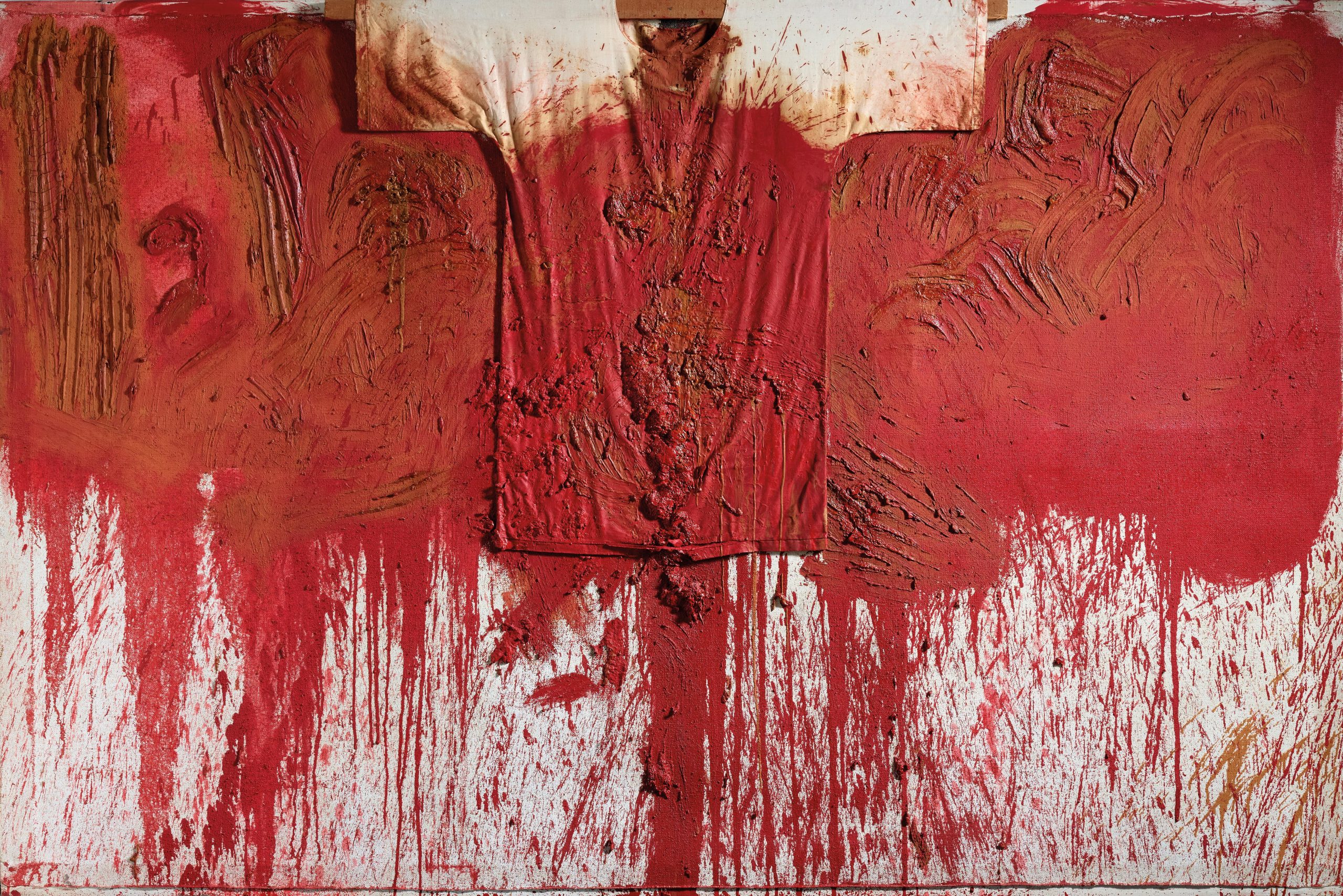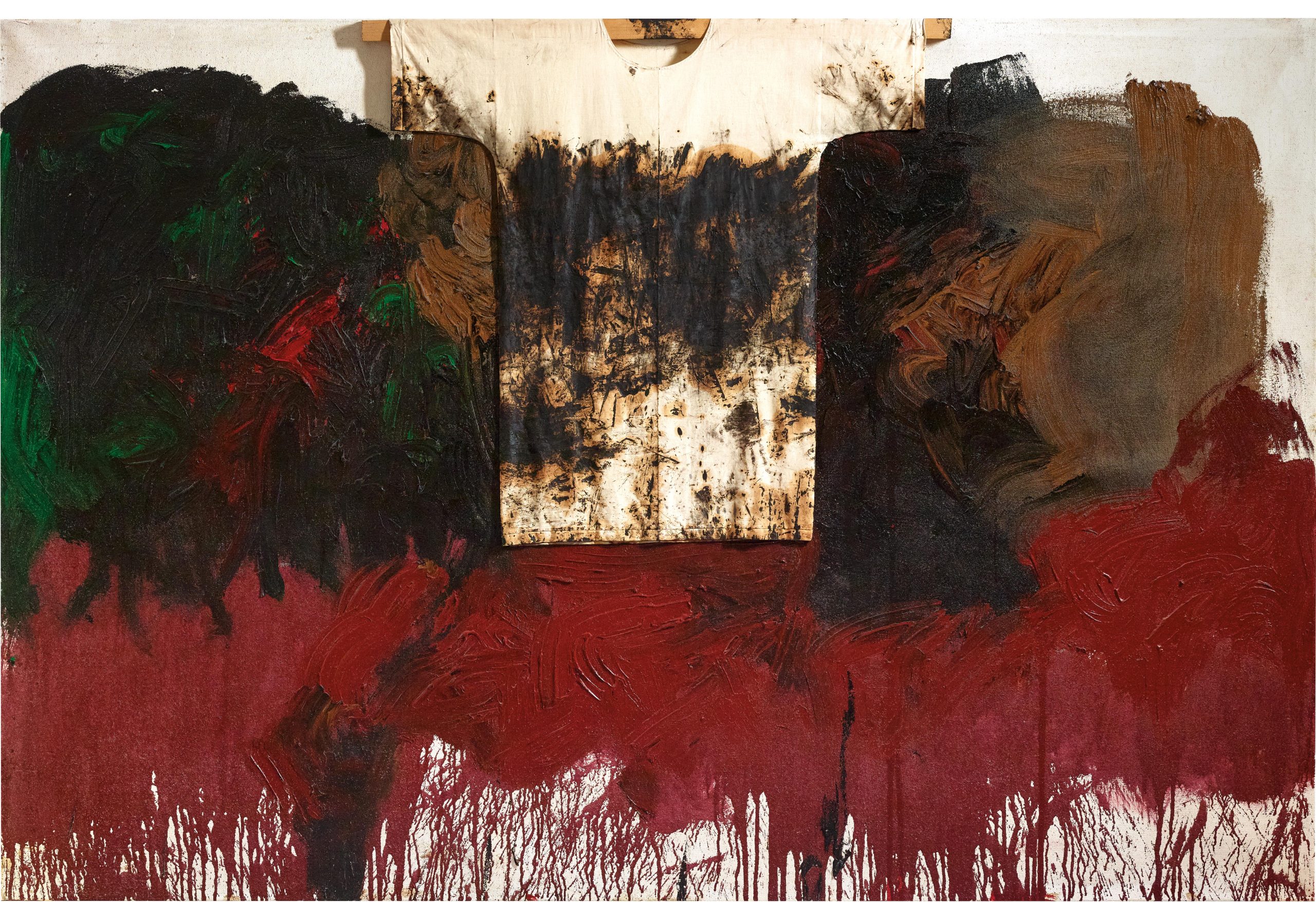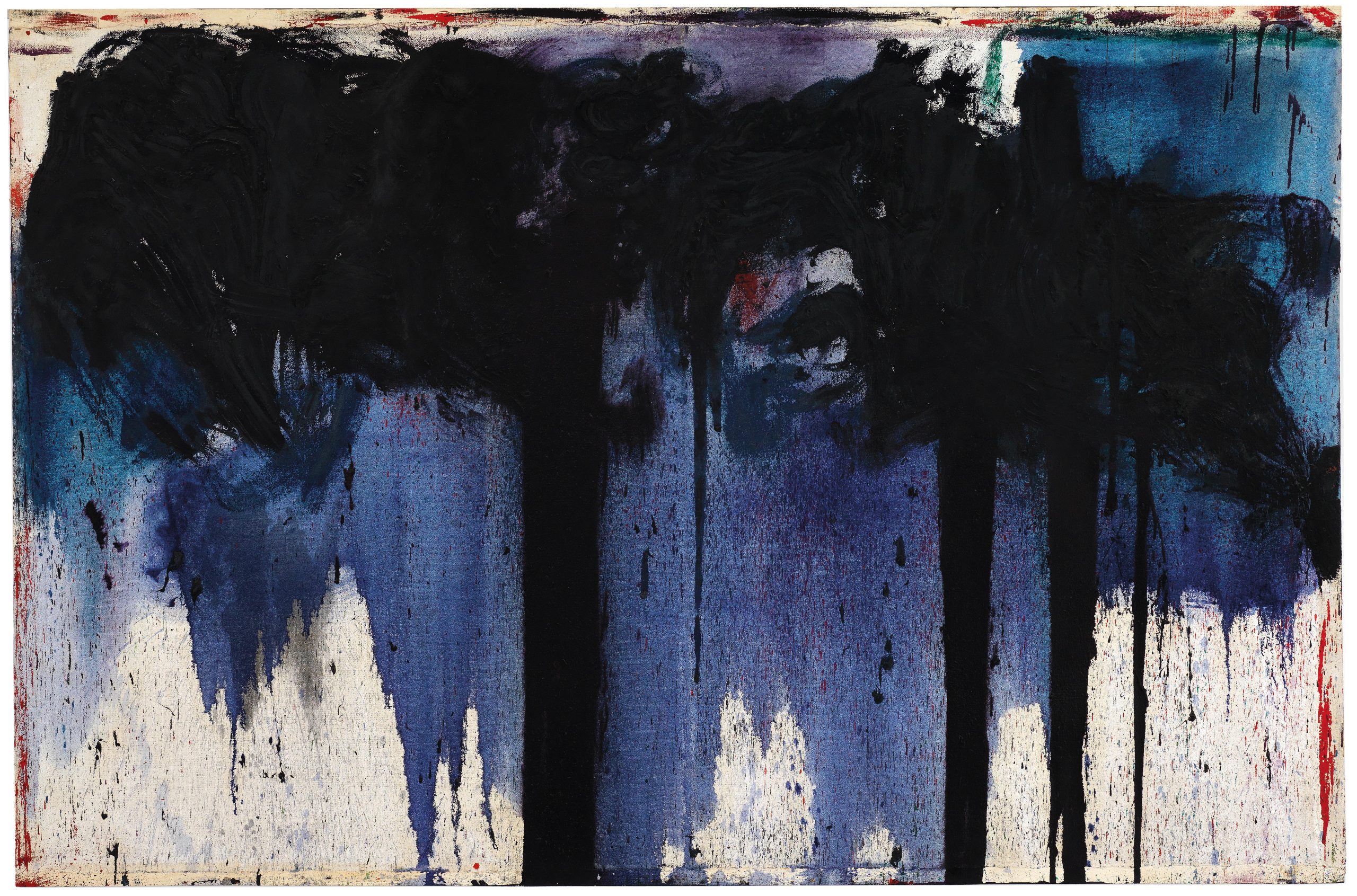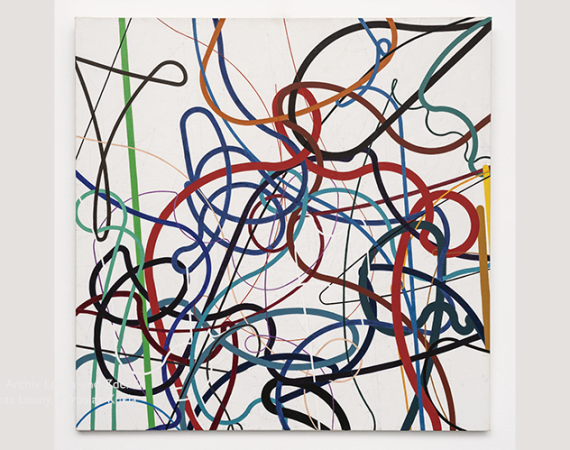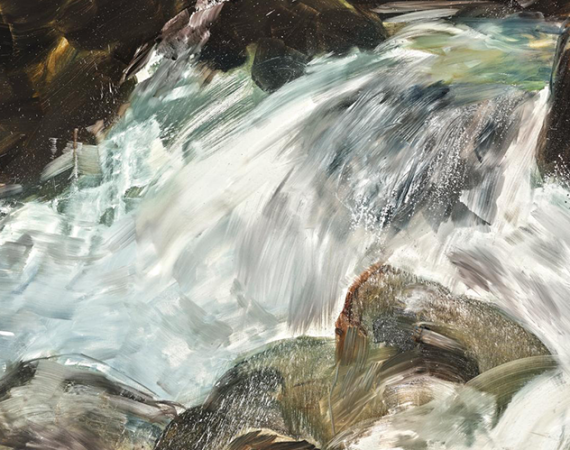Hermann Nitsch, one of the most important representatives of Viennese Actionism, would have celebrated his 86th birthday today, 29 August 2024 – an occasion to look back on the lasting influence of Viennese Actionism on the international art world and his radical work. His confrontational actions and his monumental work Orgies Mysteries Theatre earned him worldwide recognition. His extensive oeuvre consisting of paintings, action relics, music, illustration graphics, photographs and film is now part of important collections worldwide, including the Nitsch Museum dedicated to his legacy. At auctions held at Dorotheum, his works regularly fetch top prices.
Viennese Actionism
Viennese Actionism, emerging in the early 1960s, introduced a new dimension to art. The movement fundamentally questioned the role of the artwork and the artist in modern society. Key figures – Hermann Nitsch, Günter Brus, Otto Mühl, and Rudolf Schwarzkogler – created a revolutionary counterpoint to bourgeois culture and traditional art forms through their uncompromising art. Hermann Nitsch, in particular, shaped the movement with his intense performances and the development of his Orgies Mysteries Theatre.
Turning Away from Canvas
Viennese Actionism sought a radical break from established art forms. The artists rejected abstract painting, which they deemed inadequate, turned away from static surfaces, and pursued direct physical expression. Nitsch and his collaborators used organic materials such as blood, urine, and intestines in their presentations. Their bodies became instruments with which they staged violence, taboos, and existential subjects. This practice was an active response to the ideological rigidity of the post-war era and reflected a deep frustration with the inability of art at the time to adequately convey emotional and societal truths. The art of the Actionists was not merely provocative but also meant to expose repressed historical and psychological wounds and enable healing through ablution.
Hermann Nitsch: Ritual as Artwork
Hermann Nitsch–actionist, painter, composer (symphonies, organ concertos), set designer–expanded the concept of the total artwork with his Orgies Mysteries Theatre, which combined elements of Dionysian rituals, mediaeval passion plays, and mythological sacrificial rites. This “greatest and most important feast of man” aimed to release repressed traumas, which he considered an essential part of human existence.
Nitsch’s work was heavily influenced by Friedrich Nietzsche, Sigmund Freud, and Antonin Artaud, with psychoanalysis playing a crucial role in his art. For Nitsch, art was a form of religion, a spiritual practice through rituals that created meaning, deeply rooted in psychoanalysis and mystical traditions. He saw the artist as a type of priest, facilitating a collective confrontation with existential questions such as life and death. These ideas were brought to the stage in his “6-Day Play,” Nitsch’s most famous and monumental production, which took place in 1998 at Prinzendorf Castle and is considered the pinnacle of his work. Here, music, theatre, and visual art merged into an intense sensory experience. Nitsch’s intention was to provoke deep catharsis through aesthetic experience.
Action painting, distinguished by smearing or spilling, is an ecstatic artistic process closely related to Nitsch’s theatrical actions. This action painting embodies a ‘visual grammar’ for action theatre: the red colour in the painting actions echoes the ritual acts in which blood and other organic matter were used. In addition to the action paintings, such as the famous ‘Schüttbilder’, Nitsch documented his actions in photographs and videos from the beginning. Nitsch’s drawings and prints are also an integral part of his oeuvre. From the 1950s to the 1970s, drawing evolved into an independent form of expression. His monumental work “The Architecture of the Orgies Mysteries Theatre (1984–1991) is central to his graphic output, while later works such as “The Last Supper” (1983), “The Conquest of Jerusalem” (2008), and “The Burial” (2008) are characterised by elaborate printing techniques on original materials.
Scandal Art
Despite initial resistance in Austria, Nitsch’s works gained international recognition. While he enjoyed success in the USA and Germany in the 1970s, his actions remained controversial in Austria until well into the 1980s.
Art Historical Significance
Hermann Nitsch was an important person in the international art scene with his theatre, his interrelated actions, compositions, graphics, writings and from the 1960s pouring paintings until his death two years ago. Viennese Actionism is considered one of the most important contributions to the international avant-garde. Nitsch remained a central figure in the global art scene until his death in 2022. The Actionists brought about a significant shift in the understanding of art and influenced performance movements such as Fluxus and American Literary Theatre. Their work also impacted numerous international artists, including Marina Abramović and Paul McCarthy.

